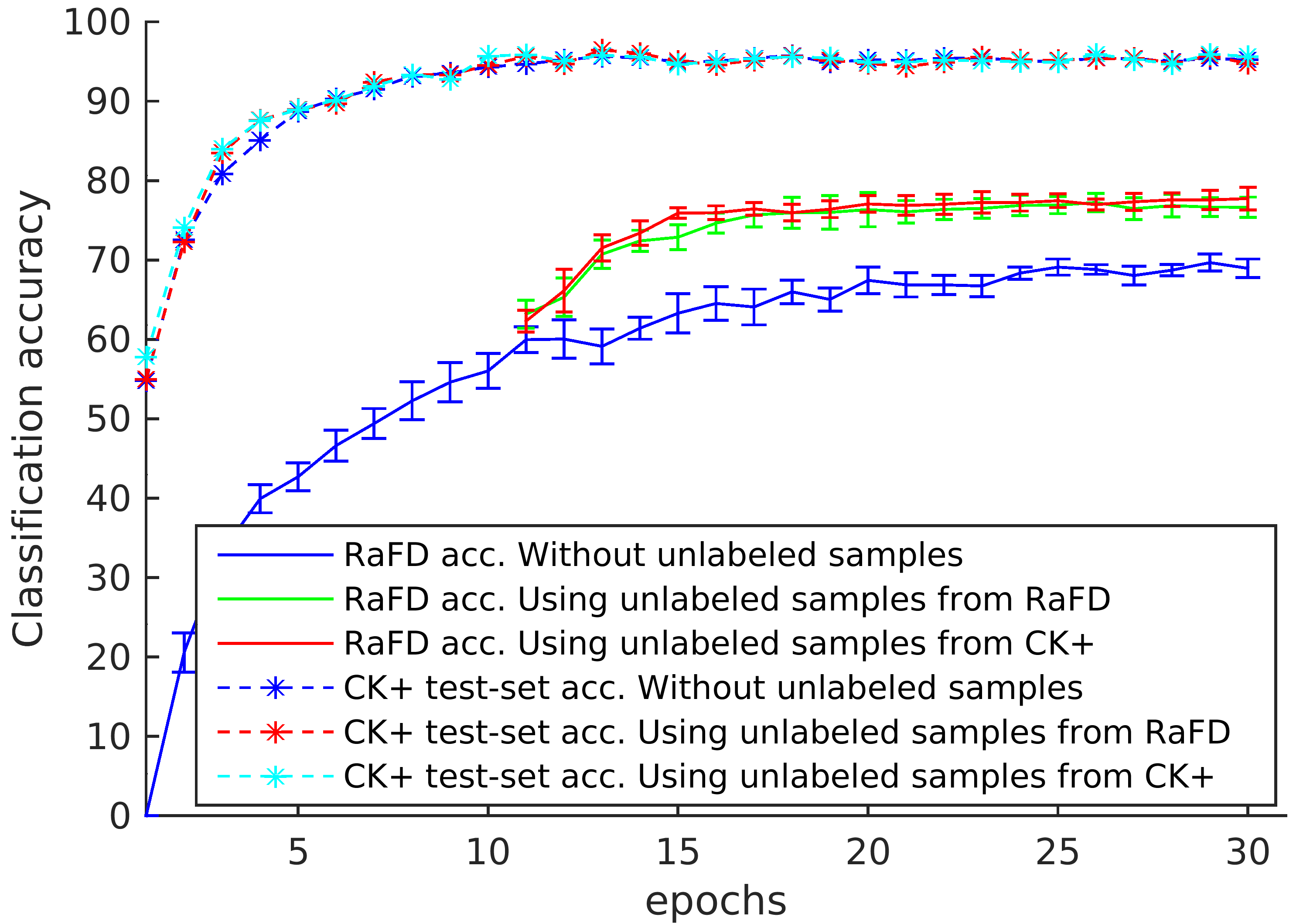Section: New Results
Combating the Issue of Low Sample Size in Facial Expression Recognition
Participants : S L Happy, Antitza Dantcheva, Francois Brémond.
Keywords: Face analysis, Expression recognition
The universal hypothesis suggests that the six basic emotions - anger, disgust, fear, happiness, sadness, and surprise - are being expressed by similar facial expressions by all humans. While existing datasets support the universal hypothesis and contain images and videos with discrete disjoint labels of profound emotions, real-life data contain jointly occurring emotions and expressions of different intensities. Reliable data annotation is a major problem in this field, which results in publicly available datasets with low sample size. Transfer learning [73], [64] is usually used to combat the low sample size problem by capturing high level facial semantics learned on different tasks. However, models which are trained using categorical one-hot vectors often over-fit and fail to recognize low or moderate expression intensities. Motivated by the above, as well as by the lack of sufficient annotated data, we here propose a weakly supervised learning technique for expression classification, which leverages the information of unannotated data. In weak supervision scenarios, a portion of training data might not be annotated or wrongly annotated [79]. Crucial in our approach is that we first train a convolutional neural network (CNN) with label smoothing in a supervised manner and proceed to tune the CNN-weights with both labelled and unlabelled data simultaneously. The learning method learns the expression intensities in addition to classifying them into discrete categories. This bootstrapping of a fraction of unlabelled samples, replacing labelled data for model-update, while maintaining the confidence level of the model on supervised data improves the model performance.
| Test databases | Percentage of training data | ||
| 25% | 50% | 80% | |
| CK+ (test-set) | 88.79% | 91.29% | 95.16% |
| RaFD | 64.25% | 65.25% | 78.46% |
| lifespan | 35.13% | 40.51% | 60.83% |
Experimental Results
Experiments were conducted on three publicly available expression datasets, namely CK+, RaFD, and lifespan. Substantial experiments on these datasets demonstrate large performance gain in cross-database performance, as well as show that the proposed method achieves to learn different expression intensities, even when trained with categorical samples. As can be seen in Fig. 23, when the model is trained on CK+ with unlabelled data, the model-performance improved by 11% in RaFD cross database evaluation. We observe that the use of unlabelled data from either CK+ or RaFD results in similar performances. Utilizing unlabelled images from CK+, the network sees varying expression-intensities and adapts to it. Table 4 reports the self and cross-database classification results with respect to varying number of training samples. Significant classification accuracy has been obtained with merely 25% of the training data. Use of a larger labelled training set strikingly boosts the cross-database performance. In future, we are planning to further improve the performance with unsupervised learning of expression patterns.


